Crew Chief Brad: [00:00:00] Break fix podcast is all about capturing the living history of people from all over the auto sphere, from wrench turners and racers to artists, authors, designers, and everything in between. Our goal is to inspire a new generation of petrol heads that wonder. How did they get that job or become that person?
The road to success is paved by all of us because everyone has a story.
Crew Chief Eric: Tonight, we’re diving into another inspiring journey into the heart of motorsport history as we shine a spotlight on Indy first. And we have the honor of having not one, but two guests with us tonight. First up is Anita Milliken, a trailblazer whose indomitable spirit and mechanical prowess shattered barriers in a male dominated world of racing.
As the first female mechanic to grace the pits of the iconic Indianapolis 500. Anita’s story is a testament to resilience, determination, and the relentless pursuit of excellence.
Lauren Goodman: Joining Anita is [00:01:00] Caitlin Brown. who made history as the first female over the wall pit crew member for Team Pinsky. And with unparalleled skill, determination, and a passion for racing fueling her every move, Kaitlin has shattered barriers and redefined what it means to be a pit crew member and one of the most prestigious teams in motorsport.
And this brings Anita’s efforts full circle, not only being part of the team, but an Indy 500 winning team. With that, let’s welcome Anita and Kaitlin to Break Fix!
Crew Chief Eric: And joining us tonight is co host Lauren Goodman, Supervising Producer of Media and Exhibitions from the REVS Institute. So welcome back to the show, Lauren.
Lauren Goodman: Well, it’s good to be here.
Crew Chief Eric: Well, as you know, like all good break fix stories, there’s a super heroine origin story. So tonight we’re going to kind of flip flop back and forth and share each other’s origin stories in the world of motorsport. So, Anita. Walk us through your journey into motorsports. What sparked your interest?
How did you get involved? Did you come from a racing family?
Anita Millican: No, I fell in love with the racer. I used to go to [00:02:00] Ascot, California sprint car race. And when Howard was in that end of the country, he had a sprint car reserved for him and he would drive. The owner of the series, Walt James, you might have heard his name, had a going away party for one of the really superb young racers, Jimmy Miller, Jim Bob, they called him, who was drafted at age 18 for Vietnam.
Not a social butterfly, never was, but his wife asked me to come and help at the party. And my car got trapped and I couldn’t escape and this guy was watching videos on the screen, the old fashioned drop screen and this guy came up beside me and I had said to myself, I wish I could see. And this guy let out a blood curdling scream, everybody went away and he said, now you have the [00:03:00] screen to yourself.
And that’s how we met. More than two years later, we were married. He wanted us to be together and all he ever did was work. So we worked together. And at a time when chauvinism was pretty rampant, really in the racing industry, I think He cut trail in his generosity to back me up, to allow me to work, to show me how to work.
He was a superb mechanic. He was extremely well respected. He was also a bit crazy wild, like all the racers were in those days. All the racers respected him. And I think that’s what helped allow me to be able to be involved is because. Howard had my back.
Crew Chief Eric: So you say Howard was a mechanic, but you’re known as a machinist.
So did he bring you into that world or was that an interest of yours too?
Anita Millican: He was a mechanic, a machinist, [00:04:00] a fabricator, a racer. And what Howard said to me, your work has to be better than everybody else’s to be accepted. And so he led me, he helped me, he guided me, and we worked shoulder to shoulder, hand in hand.
For 30 years.
Crew Chief Eric: So nobody starts at Indy. What was the road to Indy like? Where did you begin your journey in motorsports and what did it take to get to Indianapolis?
Anita Millican: My life, couldn’t even dream it or imagine it. It was so incredible and so exciting. People used to ask me, don’t you get tired? I was always tired.
It was in the days when IndyCar was on an open trailer and you took a station wagon and I can still hear the tools in the toolbox jingling in the station wagon as we would go across country. In those days, you unloaded Saturday, qualified race Sunday [00:05:00] and went home. And what we would do is go through the car Monday and then tour from, say, Phoenix back to Indy or Indy up to Pennsylvania.
We would go to forts and museums, old houses, and battlefields all across the country.
Lauren Goodman: So
Anita Millican: it was a wonderful, awesome, incredible, unimaginably exciting life with a man that was so good. He was strong, and honest, and extremely talented, and generous, and kind. Not often are people kind and strong both, and he was.
Lauren Goodman: Wow. It sounds like a real ally too.
Anita Millican: Oh boy. Yeah.
Lauren Goodman: Yeah.
Anita Millican: Wanda, Devon, the marvelous Wanda, saw us one year, many years after we’d been married and we always walked hand in hand. She had gone to high school with Howard. We happened to be going and she was [00:06:00] coming and she told Howard, she said, you act like you’re On your honeymoon we were walking hand in hand and Howard said when the honeymoon’s over so is the marriage.
Crew Chief Eric: Wow. Was it through Howard’s efforts or was it his goal to get to Indianapolis?
Anita Millican: He was working at Indy. He worked with Vita Fresh Orange Juice. He worked with Bobby Unser. Kent Chuck. I can’t think of his last name. Well, he worked as a mechanic for many people.
Crew Chief Eric: So not just being part of the pit crew, being a machinist, being the first woman over the wall at the Indy 500, what did they have you doing?
From some of the pictures I saw, were you doing fueling? What were you responsible for? Van toes and jack. And what was that like? That first time at Indy being over the wall, what were those feelings? What were you thinking?
Anita Millican: You know, I’d like to say all the things that people say, but I was a hundred percent focused on the car because in those days they came in at speed with a hundred percent [00:07:00] focus on the car getting in, getting stopped, getting plugged in correctly, staying with it until the tire crews and wing adjusters were done and unplugging.
I saw nothing, heard nothing, felt nothing, just do what I had to do with the hoses.
Crew Chief Eric: And this was in the early 80s, right? Uh, yeah. At the height of some of the best IndyCar racing we’ve seen. I mean, it’s only gotten better.
Anita Millican: There was no better racing than in those days. Phoenix, Milwaukee, Indy 500. Michigan, we went to St.
Joliet. That was just awesome. And the drivers, they were just so incredible. So awesome.
Crew Chief Eric: You had some legendary names back then, right? You had the Sullivans and the Andrettis and the Unsers and the Mears and the list goes on and on and on during those days.
Anita Millican: Yeah. And they were all spectacular and competitive.
And the crowds at Indy, I mean, there were 450, 000 people and [00:08:00] 300 acres. It was just, We would go in although it wasn’t allowed because we lived in Danville close to the track when we were in town. We’d go home and shower, get a bite to eat, sneak back into the track before the closing and sleep in the garage because at four o’clock in the morning you plug the oil heaters in.
And at six o’clock in the morning we would climb up to the grandstand when the bombs went off to open. The tunnel to watch the crowd come roaring in
Crew Chief Eric: for those of our listeners that are just getting familiarized with your story. It might be Google searching you right about now. This is the early 80s. So which team and which driver were you crewing for?
Anita Millican: Larry Dixon, the Sprint car winner, not the drag racer. It was the machinist union. With Andy Kenapenski, the head of the racing machinist union.
Crew Chief Eric: Well, let’s put a pin in your story there, Anita. And we’ll come back to that as we continue the conversation here, but let’s flip over to Caitlin. So same question to you.
[00:09:00] Tell us about how you got into motor sports and your road to the Indy 500.
Caitlyn Brown: Yeah, for me, I’ve grown up around racing. My family is big into it. We did a lot of dirt racing back home and still do. And so it was always a passion of mine and I raced myself, but I kind of got to a point where I knew that I wasn’t cut out to be behind the wheel, but I enjoy turning wrenches on them.
When I graduated high school, I moved down to North Carolina, attended a tech school and just through connections and getting to know people and trying to immerse myself in the world. In the motor sports world as much as possible down here, I was able to get a job at Team Penske. Originally, I was on the NASCAR side, and that was at first kind of what I thought my dream was to do the NASCAR racing.
But when you get hired at Team Penske and you, you know, the history of the team and what Rogers done, you know that the IndyCar team is there as well. And that was something that. Was an interest of mine. Once I got there, eventually in 2021, I was given the opportunity to dip my toes in the IndyCar racing.
And once I did, I didn’t [00:10:00] want to leave it.
Lauren Goodman: Because I’m a fan of a lot of different series and Penske competes in all different series. What’s so special about IndyCar and specifically the Indy 500 as an event?
Caitlyn Brown: I don’t know. It’s hard to explain. It’s one of those things that you really have to experience, but.
Yeah. Experience is the
Anita Millican: answer.
Caitlyn Brown: Yeah. I mean, Indy 500 race day is incredible. I can’t imagine what it was like in the eighties, but you know, even today it’s still, you know, 350, 000 plus people and you know, the traditions and the pageantry and all of it together on Memorial Day weekend, it’s really cool.
Anita Millican: Still gives me goosebumps to think about it. Can you remember
Caitlyn Brown: that?
Crew Chief Eric: What was it like your first time at the Indy 500? What were you thinking? What were you feeling?
Caitlyn Brown: So the first time for me at Indy 500 was with Beth Perretta’s team and her alliance the team Penske. It was kind of like, this is a one shot opportunity, so it was trying to soak it in as much as possible because we didn’t know if we’d get the chance to come back.
It was wild to think that we were there and we were doing what we were doing, and just to be a part of [00:11:00] it in some sort of way. That first time there opened my eyes to know I want to come back here. And I want to be successful here. And I want to be a part of this race and what it means.
Crew Chief Eric: So what do they have you working on right now?
Caitlyn Brown: So currently I am the engine mechanic on the two cars. So, you know, I maintain that during the week. So, you know, like Chevy does all the internal pieces and so we’ll get the engines from them and we’ll dress them and do everything around it, maintain the fuel cell, all of that. So I’m kind of like the middle portion of the car.
Per se, and then obviously do the inside front tire as well.
Crew Chief Eric: So fast forward a couple of years and you find yourself on a winning team at the Indy 500. What was that like?
Caitlyn Brown: It was crazy. I still can’t believe it happened, but just being able to be a part of a winning team there in any fashion and especially for Roger and.
You know, that he’s done in the history of this team, to be a part of that is super incredible and super humbling.
Anita Millican: Congratulations, you go girl. Thank [00:12:00] you. Wow. I’m so proud for you. It’s such an incredible deal.
Crew Chief Eric: Thank
Anita Millican: you.
Crew Chief Eric: That first Indy, becoming part of the Penske Indy team, did you know about Anita’s story?
Did you know about the history and the shoes that you were stepping into?
Caitlyn Brown: Not so much the first year I knew Anita and I knew a little bit about her story and the more I got involved in the IndyCar side, the more I learned of all the amazing women that have come before me and all the current women in the paddock now.
You know, last year when we won, it was kind of like that full circle moment of, you know, You know, finally, there’s been a female to win over the wall. It was kind of crazy to think that in all of the history of the Indy 500, that it’s the first time it’s happened. But then, you know, you look back at the history of it and, you know, everything Anita went through to even break the barrier of getting females in the garage.
It kind of, in a way, makes sense that it is now like the first time that it’s happening. But it also just goes to show just how hard it is to win that race, even [00:13:00] as a mechanic, as any team member. Right. It’s very difficult and to be able to do that and be able to be the first female to do that is something you don’t think would happen or that you would be a part of.
So it’s been really cool.
Crew Chief Eric: On the flip side of that, Anita, had you heard about Caitlin coming on the scene a couple of years ago? Have you been keeping track of racing since you got out?
Anita Millican: I’ve been down in Costa Rica in the jungle playing with hummingbirds and orchids and my dogs. A lot of times my TV would speak Spanish and wasn’t involved in racing, so I didn’t receive any information until Lauren Sullivan let me know that, Oh my God, you have one with.
I mean, so incredible that you did it. I mean, I’m so proud for you. I’m so thrilled for you. It’s such a really big deal.
Lauren Goodman: Thank you. We’re talking a little bit about the history here and making history. And [00:14:00] Anita, you were very familiar with the era BW, before women. I coined that. And this was a rule. No women in Gasoline Alley.
And it wasn’t allowed? It just wasn’t permitted. In fact, when the European drivers first came over, their wives weren’t allowed to be timekeepers.
Anita Millican: No, and treated very badly. Very, very badly. Arrogant, abusive. Even for years afterwards. Even in uniform. Credentialed. It was difficult to get through the gate into the pits.
Lauren Goodman: Security would stop you like, what are you doing here?
Anita Millican: Oh, they’d slam me against the fence. They called me all kinds of names. Wow. And it was just my wonderful husband, Howard, just to say, head down, mouth shut, elbows out and move forward. So how did you finally get credentials? There was an Indy Star reporter that sued the Speedway for the right to enter the garage area.
So the Speedway allowed. Reporters in but no other women and the [00:15:00] following year other women started complaining yelling. It was years before there was a bathroom in the garage area. Can you imagine going to 450, 000 people to go to the bathroom? Just all kinds of little things. But I don’t have a single complaint.
Lauren Goodman: It’s incredible to hear, yes, the privilege of being at the Speedway, participating, but also what you had to endure just to do your job. You wanted to be a professional and focus on your job and be excellent at it. And all this other, you know, BS they put you through just to do your job. I kind of want to ask Caitlin, what are things like today on team?
Caitlyn Brown: I want to ask that too. Thank you for asking. I think they’ve definitely gotten better. You know, there’s still little things here and there, but personally, like everyone’s been so great to me, you know, even like guys from other teams say, hi, how are you doing? You know, they keep in touch and, you know, they ask, what are you [00:16:00] doing on the car these days?
So I definitely think that it’s changed. There’s here and there that can get better and are getting better. But I mean, there’s so many females now in the garage that it’s hard for them to try and not let us be a part of it because, you know, we’re a part of it now and we’re here and it’s only growing.
Lauren Goodman: I was at the opener in St.
Pete for the season and just walking up and down the pit lane because I had pit lane passes, the number of women who were engineers, who were running things, who were Every single position, because that’s important too, right, is having a woman in every single area to help establish that as a norm.
Caitlyn Brown: There’s engineers, there’s mechanics, there’s quite a few of us over the wall in different positions, spotters, like there’s females in every position pretty much now and it’s really cool to see.
Anita Millican: It’s amazing because when I was there, there was one woman for years and years. There were no women. That’s amazing.
It is. And I’m so pleased that Caitlin has done that. I mean, I could just blow [00:17:00] up with pleasure at what she’s accomplished. It’s a huge deal.
Caitlyn Brown: You know, for you, was there a point when you did start to see other females in the garage and realize that you kind of got the ball rolling for us all?
Anita Millican: I quit going to the racetracks per se in the early 90s.
We pretty much stayed doing the R& D in the shop and the women that were coming in in this period were pretty much the wives scoring and that’s there were a few there was one I can’t think of her name but extremely awesome with Valvoline. She was a big deal at Valvoline. I’ve heard Caitlyn that it’s better now.
I don’t know that men will ever consider a woman fully equal. I don’t know if I’ll see it in my lifetime. I hope you do. It’s a challenge.
Caitlyn Brown: Yeah.
Anita Millican: It’s not something that’s overt, but the attitude is covert.
Caitlyn Brown: Yeah, I [00:18:00] definitely think, like, even if I don’t necessarily have to. It’s like constantly feel like, okay, I got to do this, but I got to do this 10 percent better than the guy next to me because
Anita Millican: absolutely,
Caitlyn Brown: you know, they might still question question you even if I don’t feel like the guys I work with do, but you want to be better and you want to be that much better just to prove yourself.
Anita Millican: Yeah, and what I ran into also was pit lane interviews, how many reporters. Asked a male mechanic what they weighed, you know, it’s just, it’s changing. Now, you do have to be better than the guys, but one of Roger Pencey’s great sayings is, there are no individual stars on a race team. There’s only the team as a unit.
I had some We could say discussions with the machinist union because they wanted to promote women [00:19:00] in the unions and they kept singling me out and I kept telling them you cannot do that because it compromises the cohesion of the race team. And on the team Penske, there is no better racer in the world than Roger Penske.
It’s
Caitlyn Brown: really incredible to be a part of Team Penske.
Anita Millican: Howard and I worked on Penske cars, the Dan Gurney Eagles in the 60s. Yeah. And the Penske cars. were the finest cars ever built. They were mechanically excellent. They were aerodynamically excellent. They were wonderful cars. And we got to work on a number of Penske’s on various teams.
Eventually, Jeff Ryan asked me to come to Penske Shocks in Redding some years after my husband died, and I spent six years up there working on shocks.
Lauren Goodman: Anita, did you work on any of the Eagles at Indy that ran [00:20:00] in the 70s? Oh, no. It was BW.
Crew Chief Eric: There’s a lot of other indie firsts on this list, especially Anita, you sort of alluded to working in shock absorbers.
And one of the things I found in, you know, looking over your profile and digging into your history, you and your husband helped introduce something called shock dinos. Where did that come from? And what is that all about?
Anita Millican: Well, that was an interesting story too. We were working at Gallus Research and Development for Rick Gallus in Albuquerque with Valvoline and Alan Sir Jr.
Jeff Ryan was in California with Bob Fox. Rick got Jeff to come to Albuquerque as a shock man. And Jeff is, I’m going to say the best shock man in the world. There’s a Yon Ruckus somewhere in that was Coney, but Jeff is the best. He would dream about shocks in color. He came to Howard and I at the [00:21:00] research end of Gallus cause he’s shy.
And he said, I just don’t know what to do. And Howard said, what do you want to see a shock do? And Jeff would tell him what he wanted it to do and how he wanted it to, and we developed a shock dyno that did everything that Jeff wanted it to do. Eventually, a bunch of NASCAR crew came through, one of them saw the shock dyno, and he said, well, that’s no good unless it has a spring on it.
Unloaded the shock, put the coil over on, and it was one of the most amazing things to see. If you think of a person who doesn’t know how to ride a horse, their bottom hits the saddle every other time. That’s what was happening with the shock spring combination. And it upset the chassis and at the time no one knew what it don’t feel good with some of the driver’s comments.
And people think you take a shock off and you hand them another [00:22:00] shock. Well, that’s what they did in the 60s and 70s. A shock absorber, as I’m sure Caitlin knows, is as complicated as an engine. There’s valves, pistons, o rings, forces, The way the shock functions, puts the car on the ground, makes it smooth.
The main purpose of a shock is to keep the tire on the ground. The ways to achieve that are, I don’t know, several million. And you do that by little shims, saw shims, zig shims, on different shapes and forms of pistons with bleed holes, just like in an engine. What we did was this. Dialing the shock, it was amazing to see and it made a huge difference on the cars.
Crew Chief Eric: So not only that, you and your husband were the first to put an IndyCar on a flow bench. What gave you guys the idea to do that, to get into aerodynamics?
Anita Millican: He cut a full size IndyCar in half [00:23:00] lengthwise. And put it on a plate, put a big curved throat at the front and an airplane motor at the back and we sucked air through it.
And some of the things we learned were from some of the mistakes we made in setting up the wind tunnel. One of the things we did, we worked a whole day. On the space between the tire and the cowling and we were making games making games. We realized at the end of the day that the model was moving. And so what that led to was changing the shape of the body work inside entering the tunnel.
One of the things we saw, knackaducks were just coming in to fashion. We would put either little drops of oil across the leading edge or a bit of short piece of yarn taped. The knackaduck is supposed to draw air in. This one [00:24:00] was not. Sucking air out for its shape, you know, we just learned so many things.
We put a kid in the Spelegrum at Indy. They’re racing bicycles. We put a kid on a bicycle and developed a helmet. That was aerodynamically cleaner. He sat in the wind tunnel, pedaling his bike, moving his head and his arms and his back to be aerodynamically clean. And he went quite a lot faster. We did radiators.
We learned that, and Caitlin, I’m sure knows, a nine fin radiator is less drag, equates to more horsepower, but it cannot cool for long periods. An 11 fin, cool, better, but more drag. Put the 9 fin on to qualify, and the 11 fin for the race.
Crew Chief Eric: So somewhere in all this R& D, supposedly you guys also had a hand in the introduction of the more modern [00:25:00] style front wings on the IndyCars, is that true?
Anita Millican: Mm hmm. An airplane wing in shape is to lift. On an IndyCars F1, it’s to suck, you want to get it to hold onto the ground. One of the things that we were seeing, I forget the year, but they were crashing, coming off at speed on the fourth turn. And what was happening, the right front corner, as it came around, was lifting just millimeters.
Tiny bit. It was losing downforce on the car and it couldn’t control it. And we saw that
Crew Chief Eric: Caitlin, all these things you’re hearing about Anita that she was involved in with her husband, Howard, in doing the research and development, inventing these different solutions and modifications to the cars. How much of this stuff are you still seeing today and maybe taking for granted at Penske?
Caitlyn Brown: There’s still quite a bit of it. Like one of the big things we do is we go aero testing and we still check all these little things. And is this adding drag or is this [00:26:00] taking away or what is this little guy doing here on the car? And what’s this dot doing there and how is it affecting everything? And no, Indy’s our biggest focus.
So it’s the one thing that we’re constantly still testing, you know, ways to get better there. But I think Anita has done way more incredible things in the testing world and R and D to figure out what works best, it’s incredible hearing her talk about that. It’s really cool.
Anita Millican: But you know full well that in two months, three races, six months, your development now is obsolete.
Then that’s why you keep developing, developing, developing, testing, changing.
Crew Chief Eric: I want to transition and talk a little bit about the future. And I sort of want to pick up Anita, where your story left off. And you alluded to this earlier, you said you got out of racing in the early nineties. So I’m wondering, were you there in the advent of Lynn St.
James coming on the scene and becoming, you know, rookie of the year and all that in the early nineties? Were you there to see that?
Anita Millican: Yeah. [00:27:00] And she and I had, shall we say, numerous discussions. Lynn is focused on women drivers. She’s not focused on hands on over, I told her that there’s an age limit, men or women, for drivers.
A mechanic can retire when they’re 90 years old. I did not get out of racing in the 90s. I just stayed in the shop, and we eventually work pretty much exclusively on shock absorbers.
Crew Chief Eric: If I remember my history correctly, Lynn and her husband also were in the shock business. So did you compete against her in business as well?
Anita Millican: Well, I was at Penske. Lynn St. James was working with Panos. To develop the car and for some reason, he also contacted Penske shocks, and I got the deal for the panels cars for Penske, and I thought that Lynn would be very excited about that, [00:28:00] but she was pretty upset because she wanted john to do the shocks.
But there were Penske’s on them.
Crew Chief Eric: So in Lynn’s case, you know, she wasn’t the first woman behind the wheel of an Indy car. You know, we can go back and talk about Janet Guthrie and things like that. But as you were transitioning to becoming more involved in the shop and she’s getting ready for her debut at Indy, what was that like for you?
What were you thinking about to see a woman behind the wheel of an Indy car, having you yourself transitioned into going over the wall and being more accepted at the Indy 500?
Anita Millican: I felt there should be more women. Period.
Crew Chief Eric: And that’s completely fair. So when did you officially retire from motorsport, getting out of the shock business altogether?
How long ago was that?
Anita Millican: I was working on gasolineality at Indy Motorsports on Saturday, got on an airplane with a backpack and two dogs and landed in Costa Rica on November 26th in 2012.
Crew Chief Eric: That’s a long career in motorsports. Congratulations. Thank you. [00:29:00] So, Caitlin, you’re still in it. You’re in the throes.
You’re at the front end of this climb. What’s next for you?
Caitlyn Brown: Yeah, what’s next?
Crew Chief Eric: What are your hopes, your dreams?
Caitlyn Brown: You know, right now, just keep building as a mechanic and just learning everything I can to further my career. Next step for me, you know, next goal of mine would to one day be a car chief. That’s, you know, working with the engineer and driver and relaying the information the engineer gives to set the car up and not even just set the car up, but, you know, taking responsibility of the crew on the car and help and run the car.
Lauren Goodman: Caitlin, I’ve seen you speak before at the last Women With Drives Summit. I think you’re going to do the next one at the Speedway this coming year. So I hope I see you again there and you have more incredible stories about going over the wall. If you had any questions, Any advice to give to somebody, a young woman looking to get a foothold in motorsport, what would be your top three tidbits to give them?
Caitlyn Brown: Like Anita said earlier, like just put your head down and work. Like that’s something I still do every day, just head down and [00:30:00] work. You know, I have a great attitude, and that’s not something anyone could change but yourself. You know, something I say all the time is, the car doesn’t know who you are or what you are.
It doesn’t know if a guy’s working on it or a female’s working on it, so you just gotta do the best job you can.
Anita Millican: And be helpful and generous and considerate to all the team. Well, don’t try and take the credit or, as Roger Penske said, don’t point the finger, fix the problem.
Lauren Goodman: Yeah,
Anita Millican: be humble. That’s what I tried to do was be generous with the teammates, encourage them, help them, congratulate them.
It makes it easier for you to be around them.
Caitlyn Brown: You’re never going to know everything there is to know. So you got to humble yourself and, you know, be willing to ask questions, even if it’s hard ones, and just always stay learning. And I think that’s something I try and do. Absolutely. Also to show people that you don’t think you’re better than them in any sort of way because You know, it’s a privilege for us to all be a part of it.
Perfect.
Anita Millican: I plagiarized Little Al when he won the [00:31:00] Speedway against his daddy and saying his dad taught him everything he knew. He wasn’t able to teach him everything his dad knew, and I can say that with Howard. Howard taught me everything I know. He didn’t have the years in his life to teach me everything he knew.
Lauren Goodman: I think looking forward, the really big question is, How do we keep things on the right track? In other words, how do we keep this progress going in the paddock, that it’s becoming easier and easier for women? And I know, Anita, you’re saying maybe not during your lifetime, but maybe during Caitlin’s. Is there really just like one silver bullet solution, or do you think it’s a lot of things?
Anita Millican: I think it’s Women need to support women. Linda Conti said the other day, little girls now are being allowed, I wasn’t, to play sports. In playing sports, the objective for a little kid is not to win, it’s to learn teamship and communication. And little girls now [00:32:00] are learning that. In my time, I had a lot of pushback from women.
And so I think it’s important, and I’m sure Caitlin knows and does, is support the women. Not to the exclusion of guys, but to support, encourage, back up the women.
Caitlyn Brown: One thing that I’m seeing a lot more of is just like bringing in kids to the racetrack. Just showing them that. There is females in these positions and they can do it.
There’s a lot of programs now that they bring kids from schools into the track on a Friday or Saturday and show them around and all these different diversity programs that are helping to showcase and get them to have like the eyes on it to see, you know, what is possible for them.
Anita Millican: I used to go into schools, high schools, grammar schools, to encourage kids that yes you can, and we’d bring a shock absorber or a turbo, and we’d show them you can touch this, you can manipulate it, you can work it, but you [00:33:00] have to pay attention in grammar school.
You have to learn your math, be careful what you do, and because it was a real race car part that they could touch, I think it sparked.
Crew Chief Eric: I guess the term these days is girl dad, which is what I am. I got two little girls. And let’s say they walked up to either one of you and said, Anita, why should I pursue a career in motorsports?
Or Caitlin, same question to you.
Caitlyn Brown: Go, Caitlin. I’ve had this question asked and, you know, if it’s something you’re passionate for, then, you know, there’s no reason you shouldn’t try and go for it. Especially to young girls. I was lucky in my life to have people tell me that. So to just be able to continue to carry that message forward.
Anita Millican: Tell any kid, girl or boy, you can, but you have to work hard. You have to want to. It’s wonderful, exciting. But it’s not easy. It makes for tremendous passion. Caitlin, you know, racing is addictive. [00:34:00] highs and lows. Tell your little girls to go for it.
Crew Chief Eric: Alright ladies, well, we’ve reached that part of the episode where I’d like to invite our guests to share any shout outs, promotions, or anything else that we haven’t covered thus far.
So, Anita, anything you’d like to say? Anybody you’d like to thank?
Anita Millican: I’m so impressed with Caitlin. I’m so thrilled for her. It’s awesome. Thank you. I’d like to thank my wonderful husband, but the list is 45 years long. Jeff Ryan, Roger Penske, Mark Meikle. I’d like to thank the people who supported me and I’d also like to thank the people who Made it difficult for me because it made me stronger and better.
Crew Chief Eric: Caitlin, how about you?
Caitlyn Brown: Yeah, just, you know, my family and everyone that supports me and, uh, all my teammates. And no Roger for giving me the biggest opportunity there is. The best
Anita Millican: in the business.
Crew Chief Eric: And I think we got to give a special shout out to Miss Lauren Sullivan for bringing us all together tonight to be able to share these stories with everyone.
Caitlyn Brown: Thank [00:35:00] you, Lauren. What an honor. She kept telling me, you got to talk to Anita. You got to talk to Anita.
Lauren Goodman: In this episode, we dove into Caitlin’s journey from her early days as a racing enthusiast to a groundbreaking role with Team Penske, exploring the challenges she’s overcome and the triumphs she’s achieved along the way.
Which is Anita’s dream come true, unraveling the challenges she faced, the triumph she celebrated, and the lasting legacy she left on the sport. We invite you to celebrate both of these women by searching for them online and through social media, and be sure to share this story with others.
Crew Chief Eric: Absolutely.
And I can’t thank both of you enough for coming on break fix and sharing your stories and getting together, giving us this exclusive opportunity to unite you both and to learn about the past and the future and celebrate what’s happening in motor sports. This is. Absolutely amazing. And I can’t believe what you both have done.
So I have to say thank you. Thank you. Thank you. And congratulations to [00:36:00] you both. Because if it wasn’t for both of you, I don’t know where Motorsport would be these days.
Lauren Goodman: Thank you. Thank you. Huge for me too. And both of you, if you’re ever in Florida, you have a standing invitation to visit the museum and I’ll give you personal tours.
If
Anita Millican: you’re ever in Costa Rica, mi casa es tu casa.
Crew Chief Eric: We hope you enjoyed another awesome episode of Brake Fix Podcast brought to you by Grand Touring Motorsports. If you’d like to be a guest on the show or get involved, be sure to follow us on all social media platforms at GrandTouringMotorsports. And if you’d like to learn more about the content of this episode, be sure to check out the follow on article at GTMotorsports.
org. We remain a commercial free and no annual fees organization through our sponsors, but also through the generous support of our fans, families, and friends through Patreon. For as little as 2. 50 a month, you can get access to [00:37:00] more behind the scenes action, additional Pit Stop minisodes, and other VIP goodies, as well as keeping our team of creators safe.
Fed on their strict diet of fig Newtons, gummy bears, and monster. So consider signing up for Patreon today at www. patreon. com forward slash GT motorsports, and remember without you, none of this would be possible.
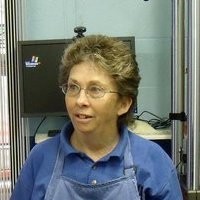
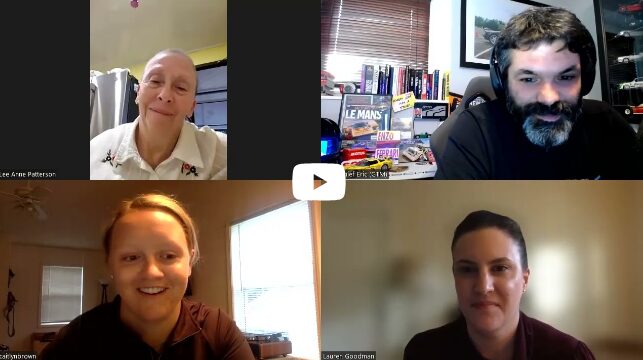


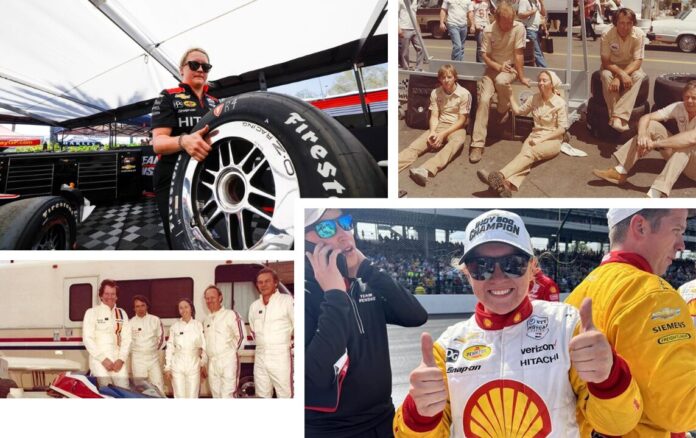
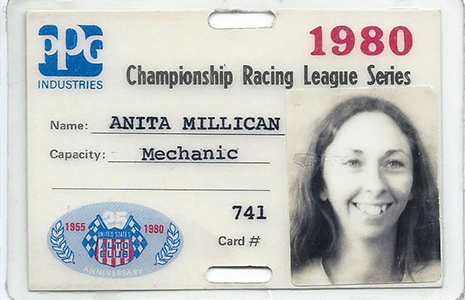
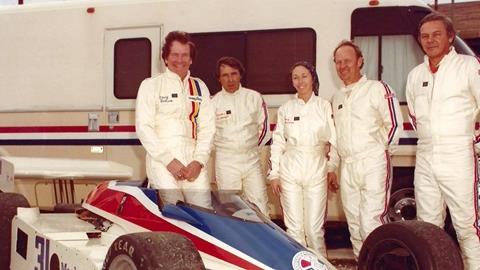
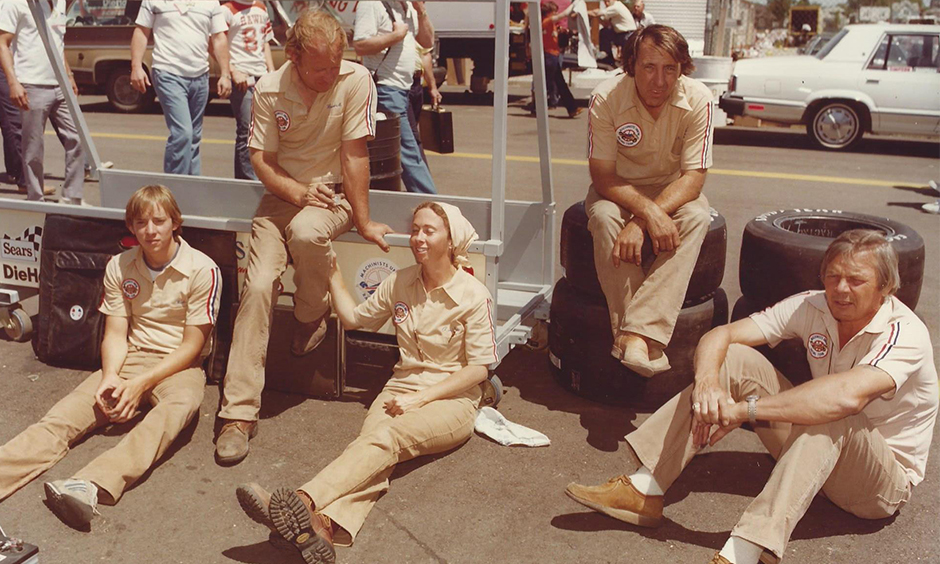
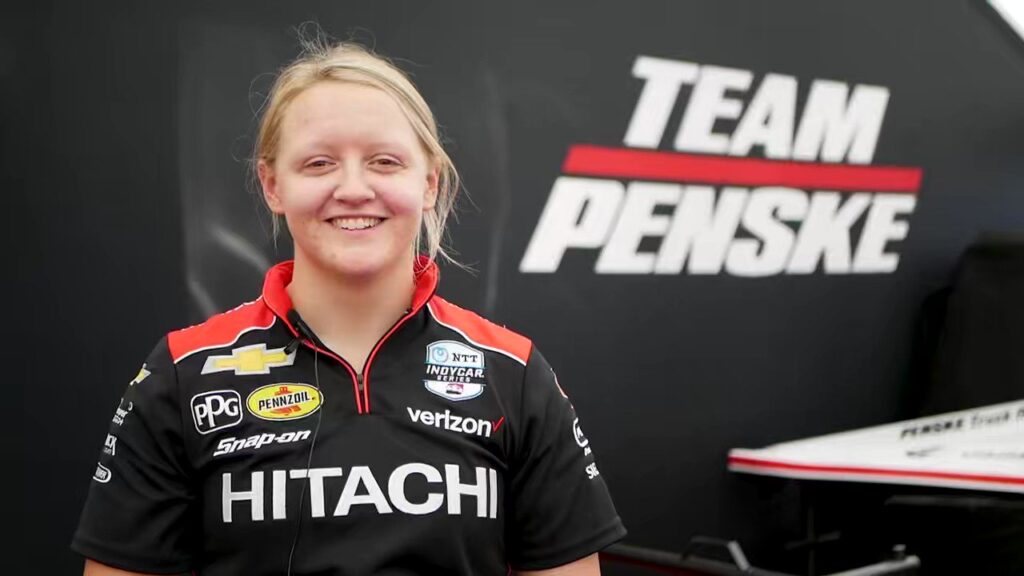



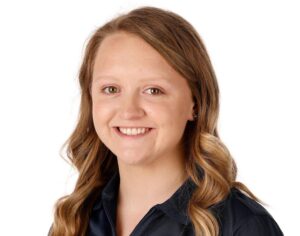
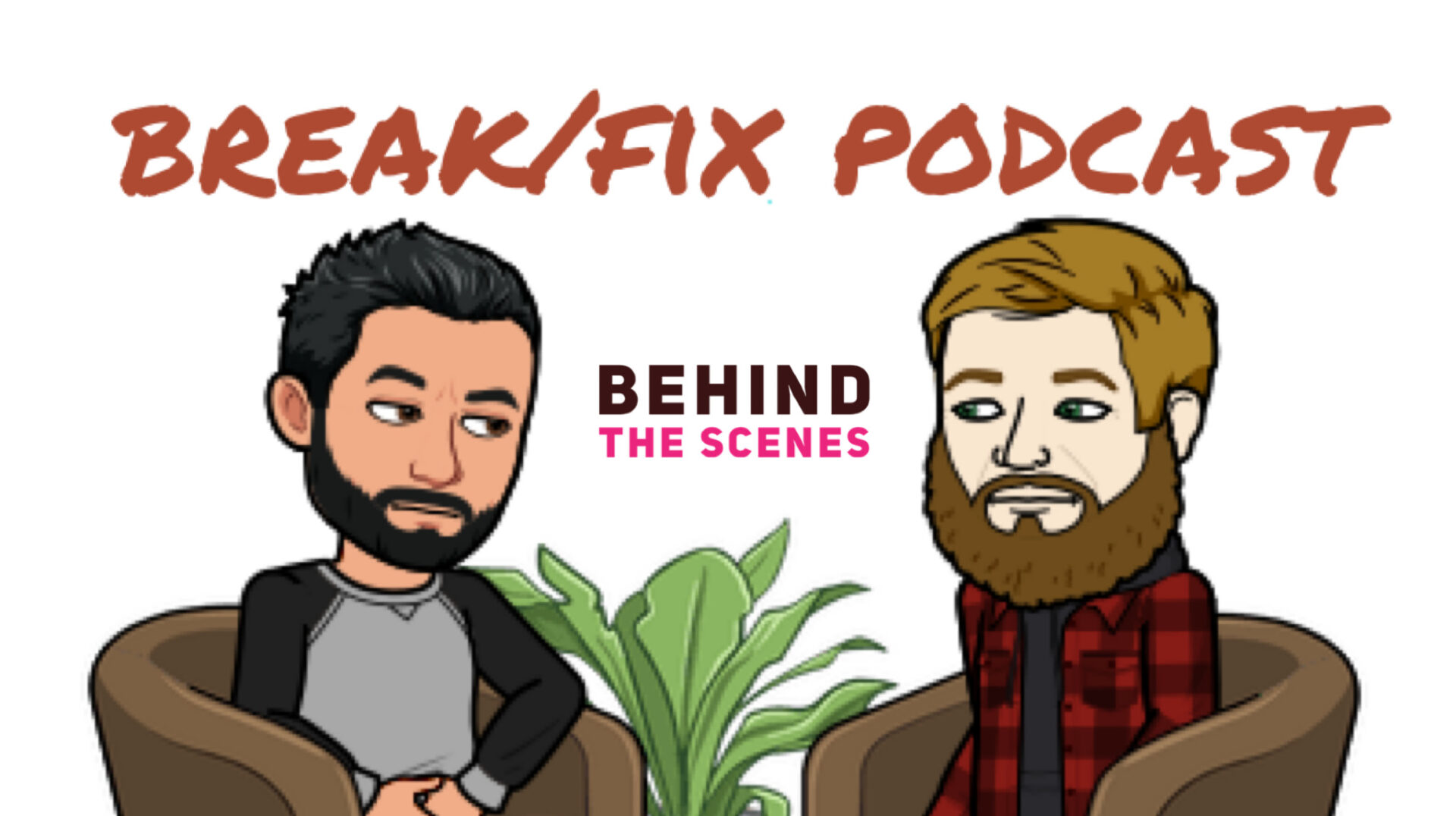

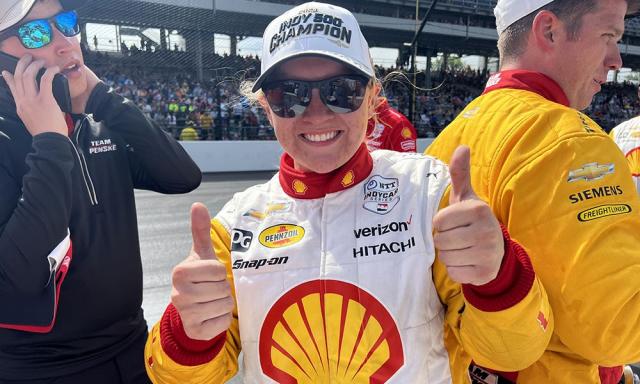
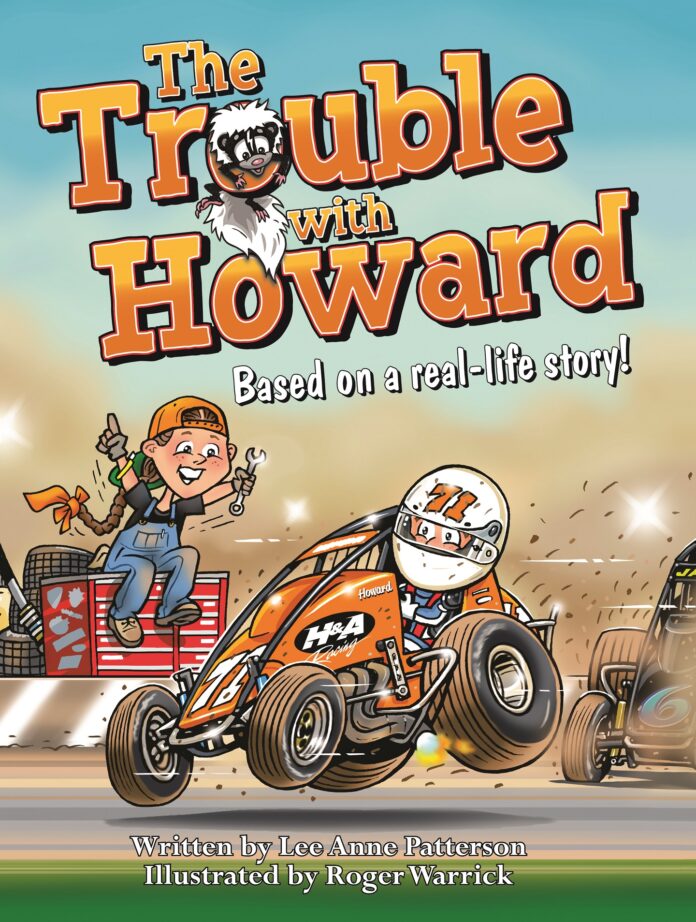
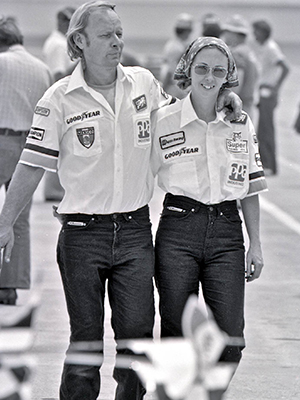



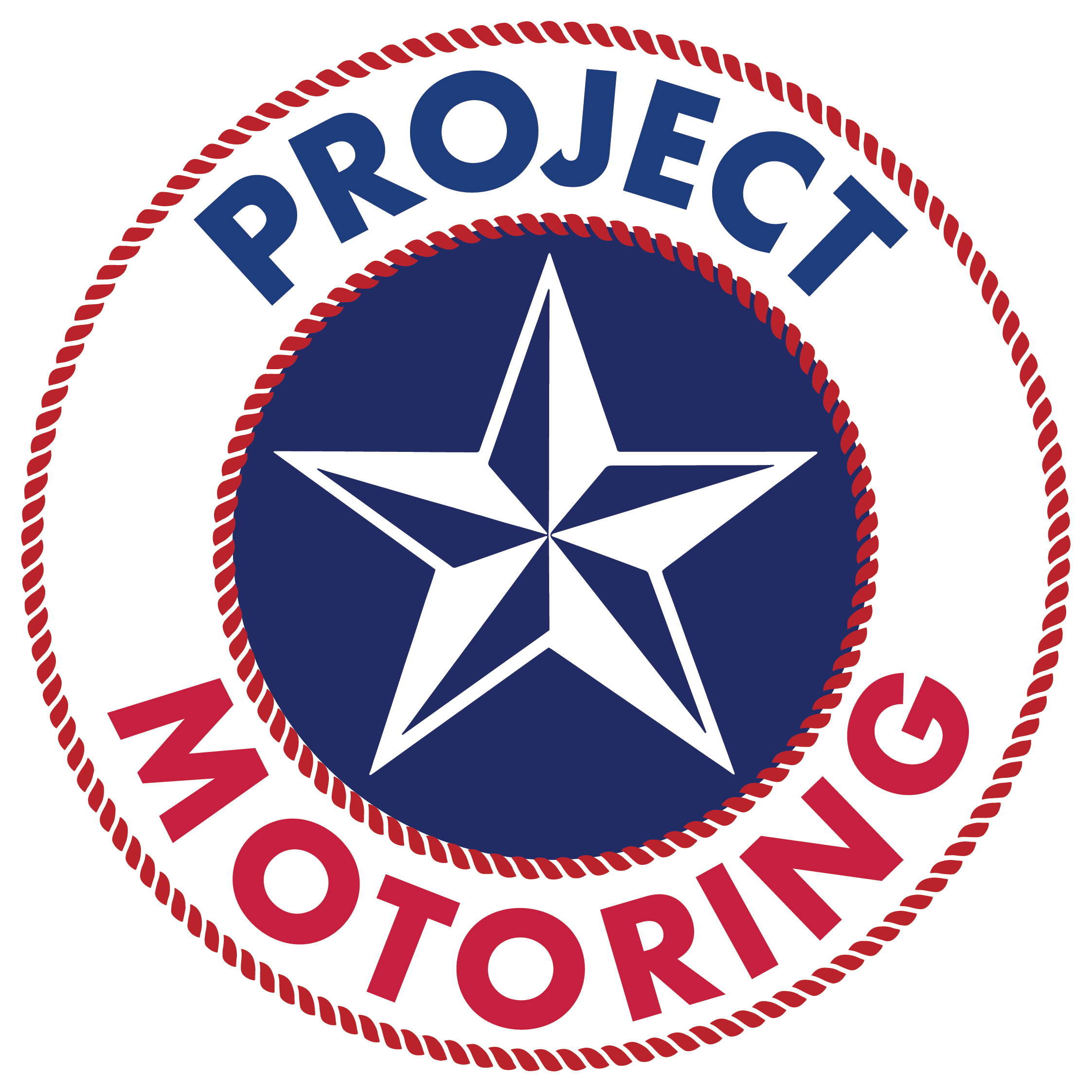

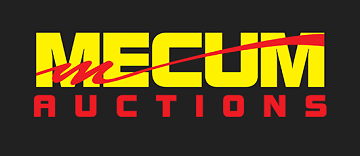

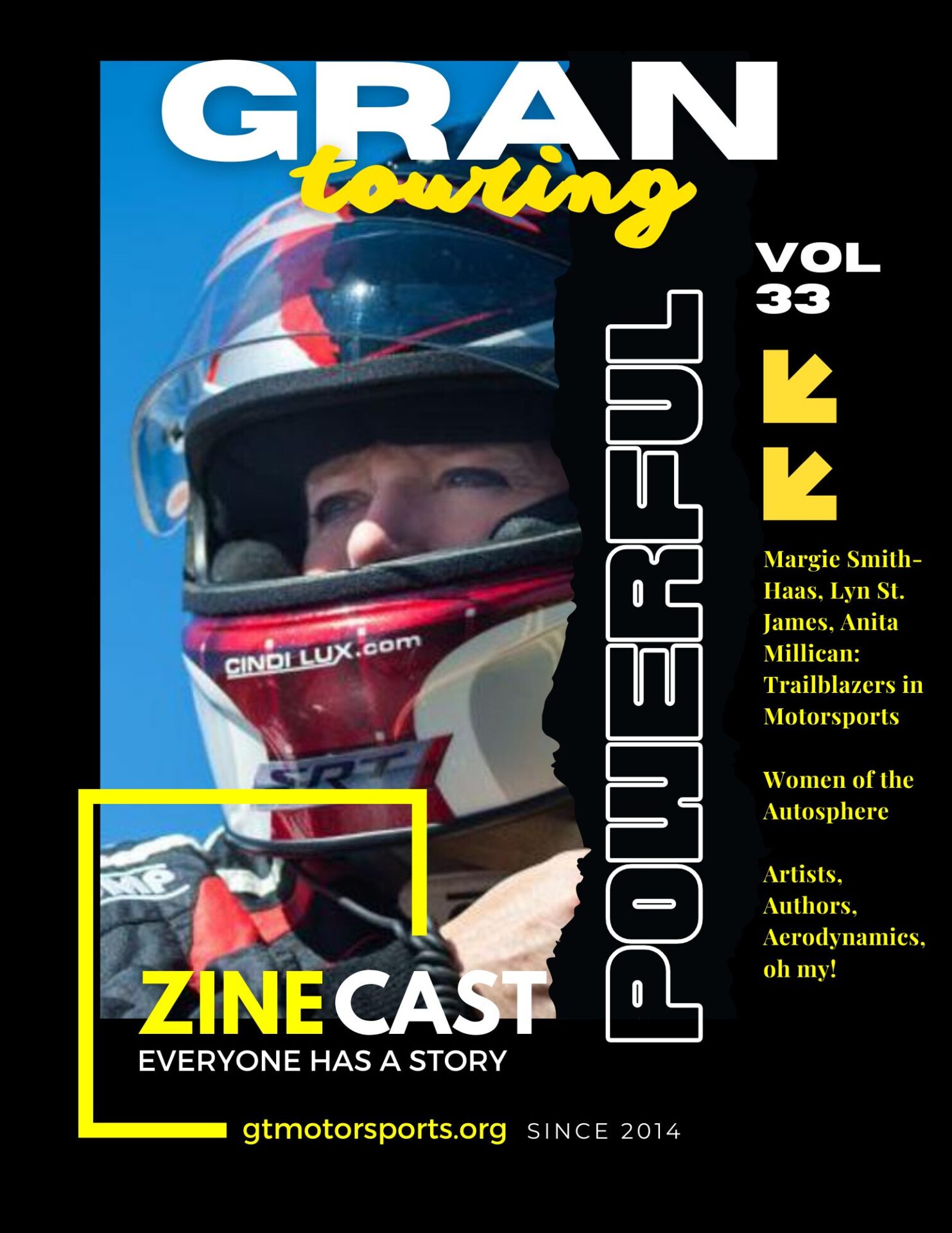

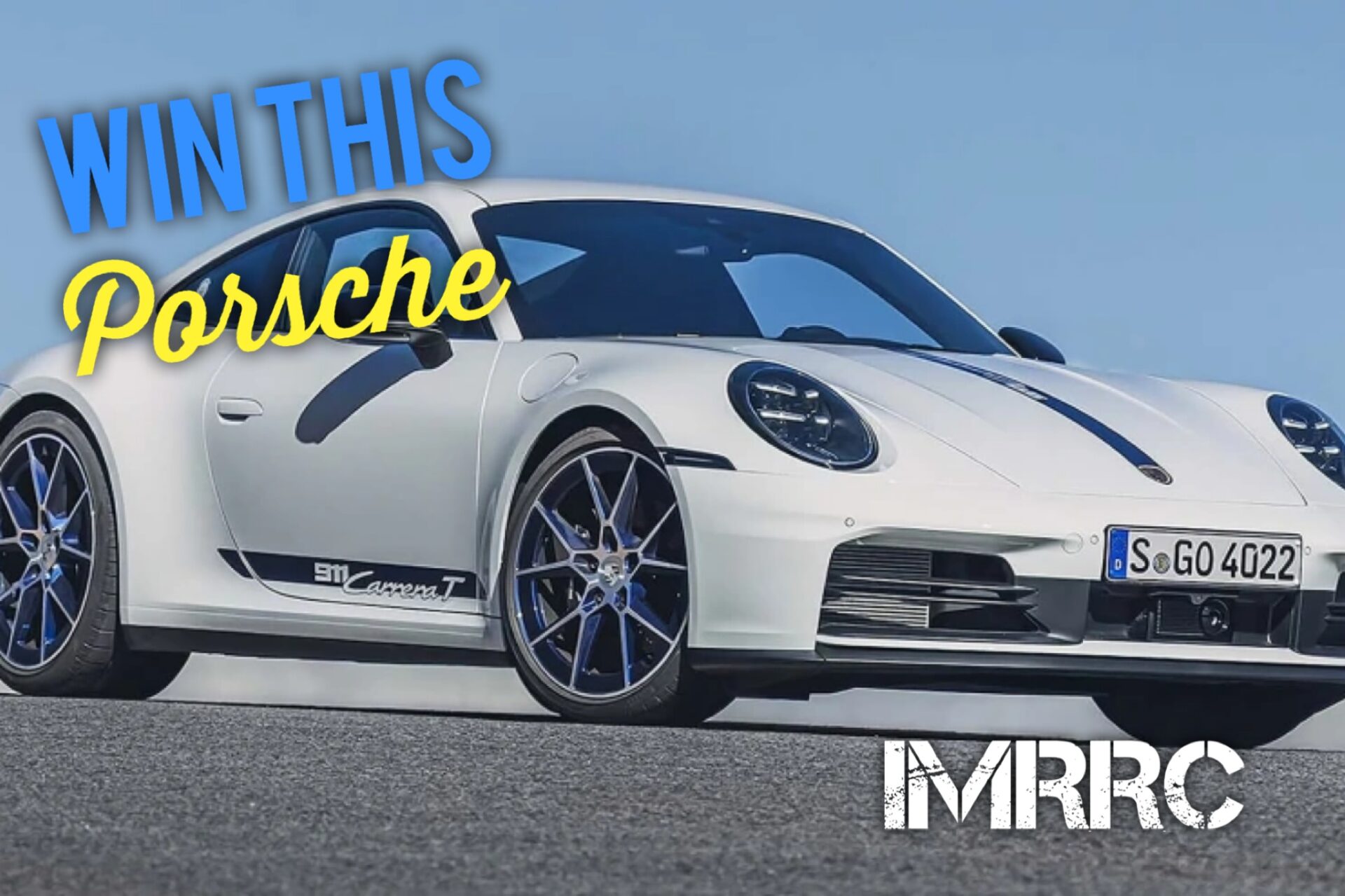


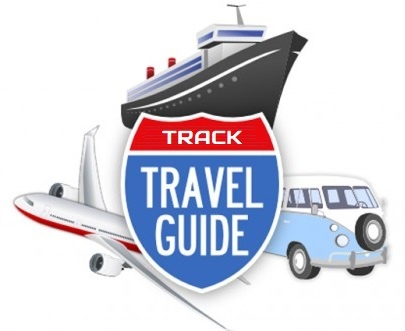
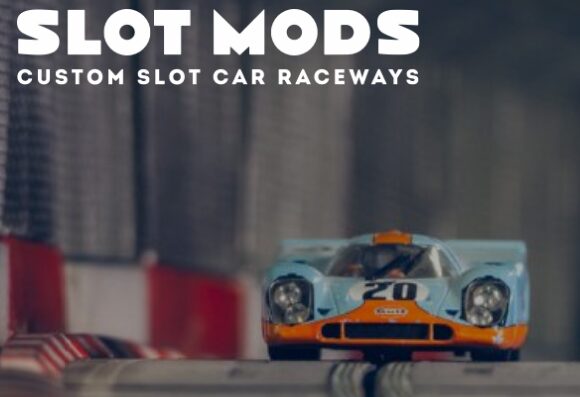
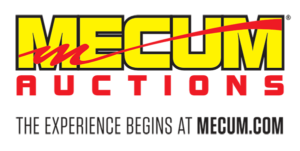

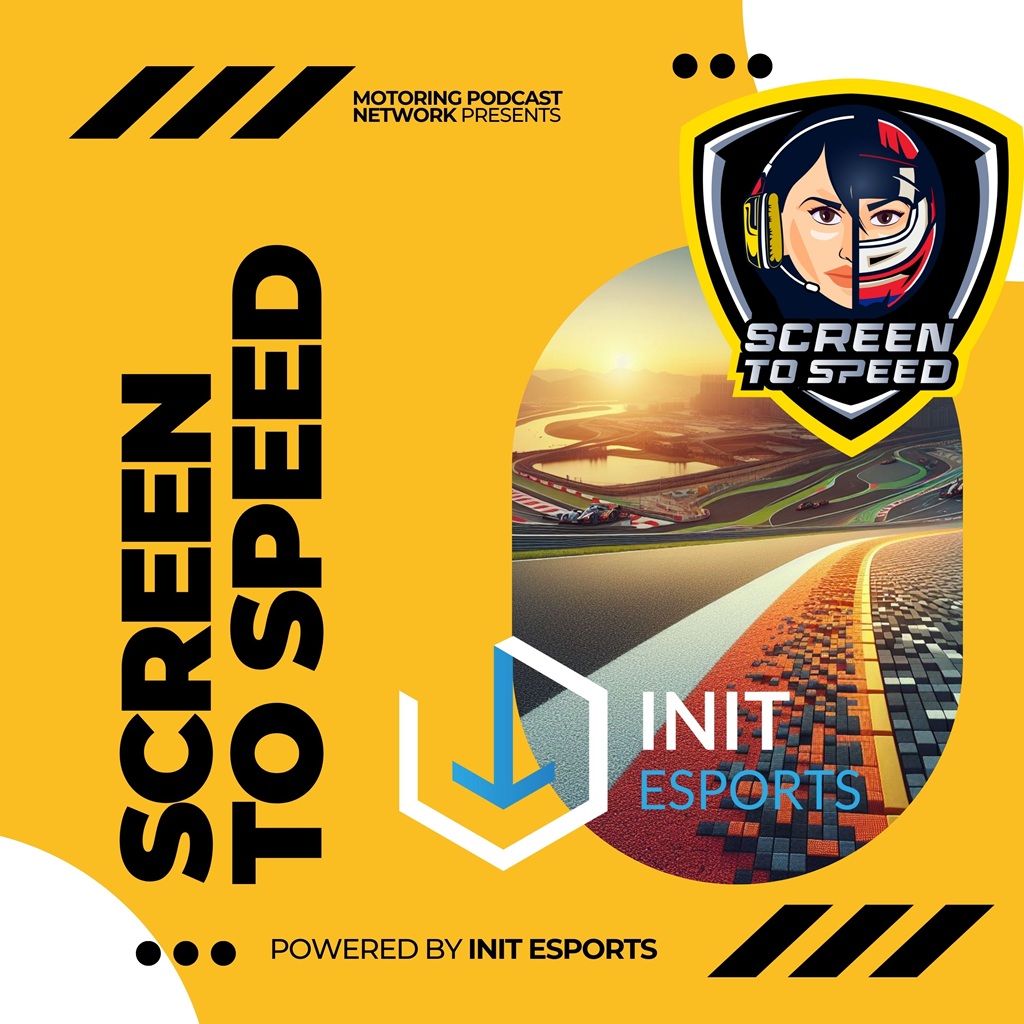
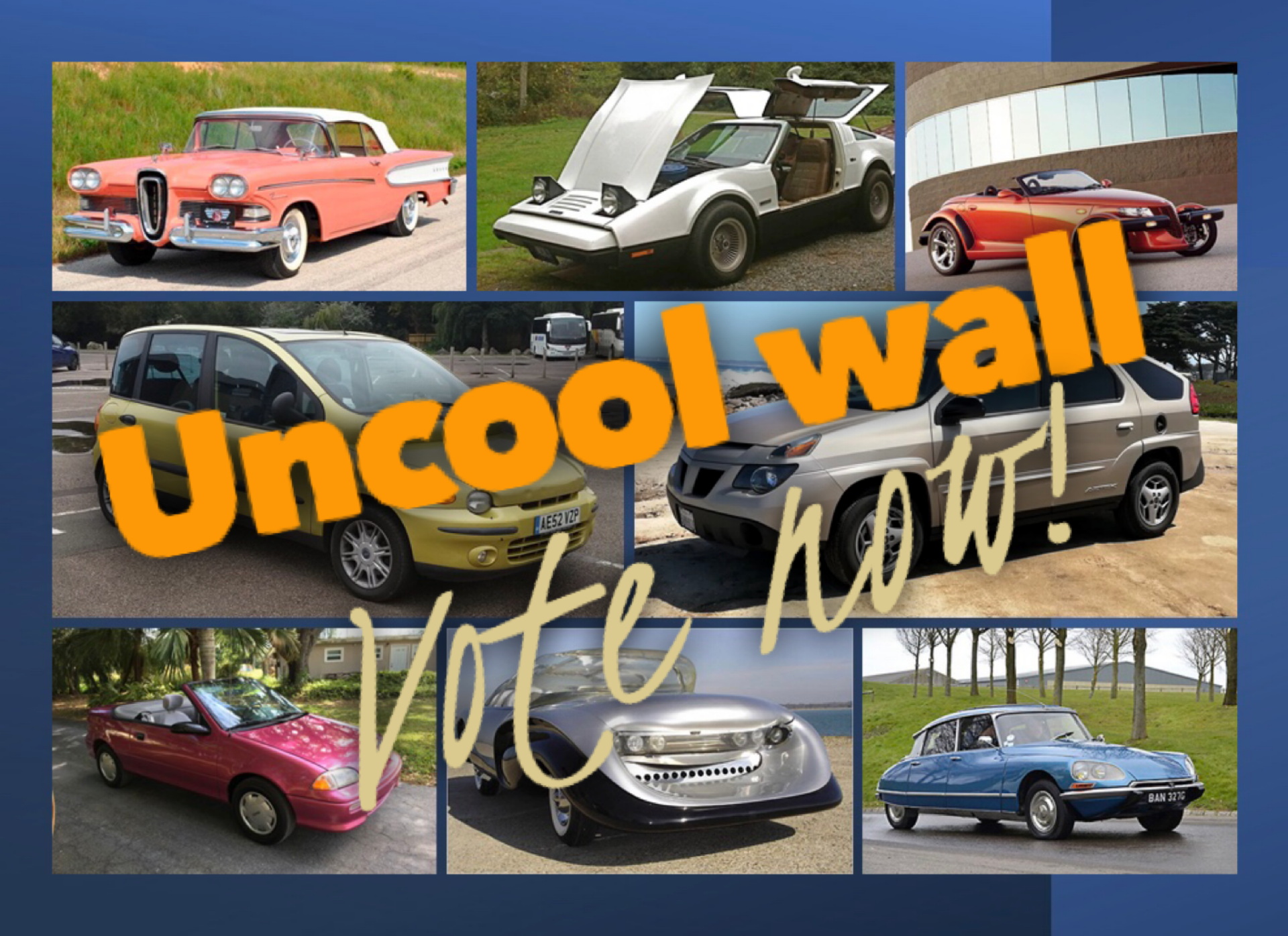

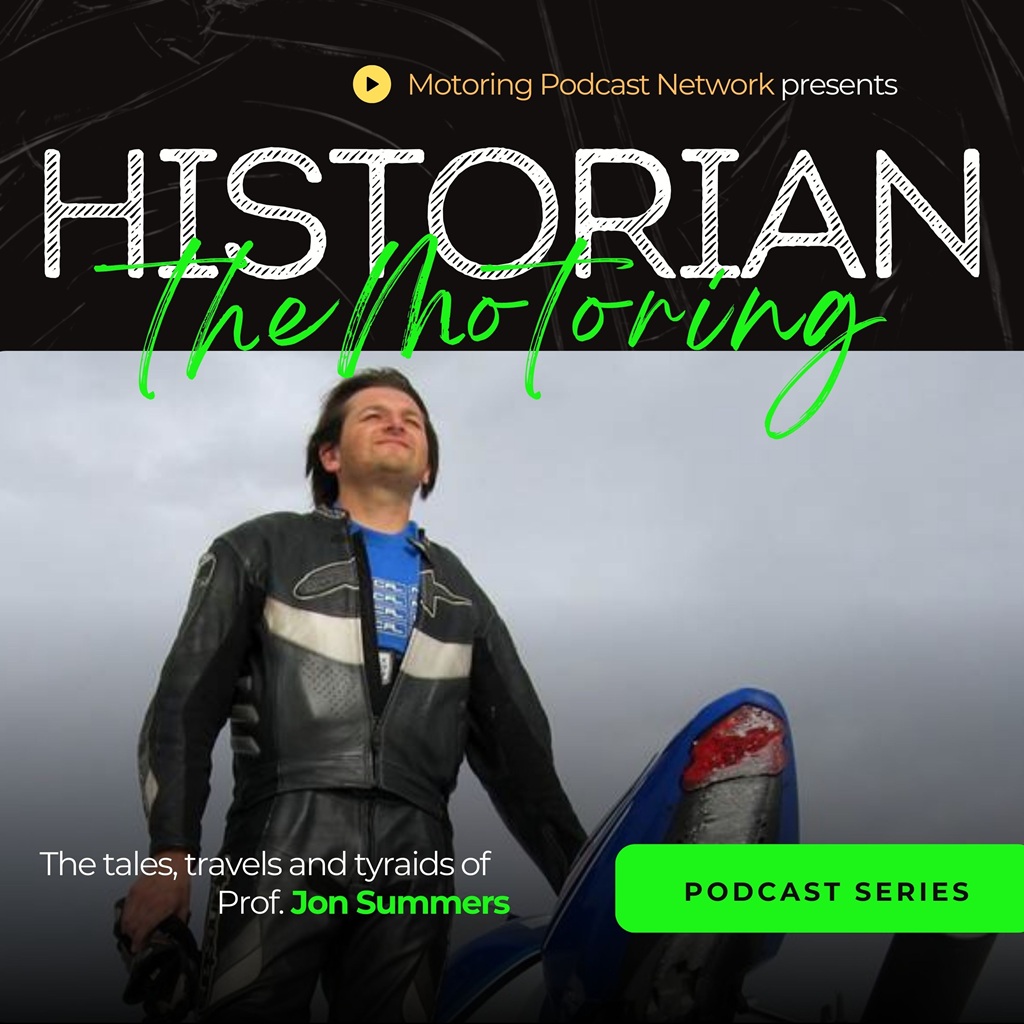

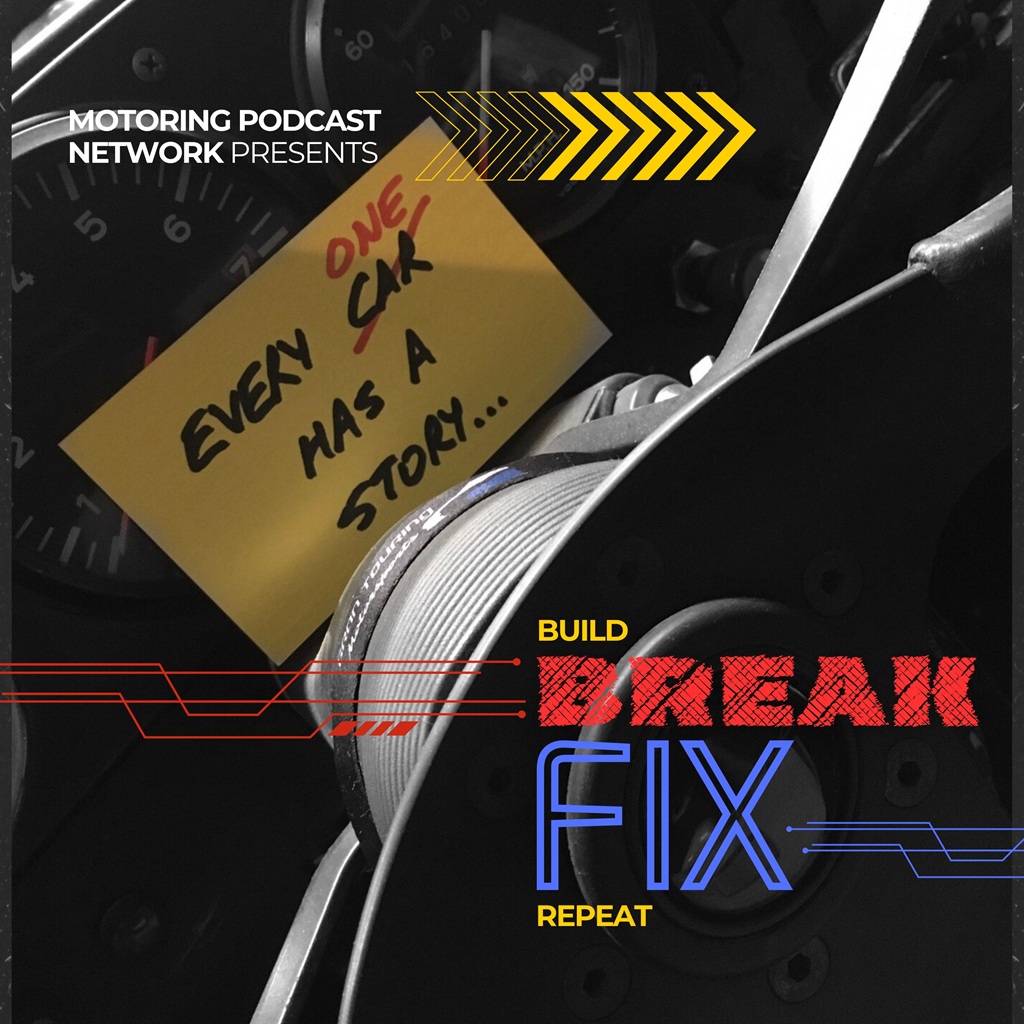

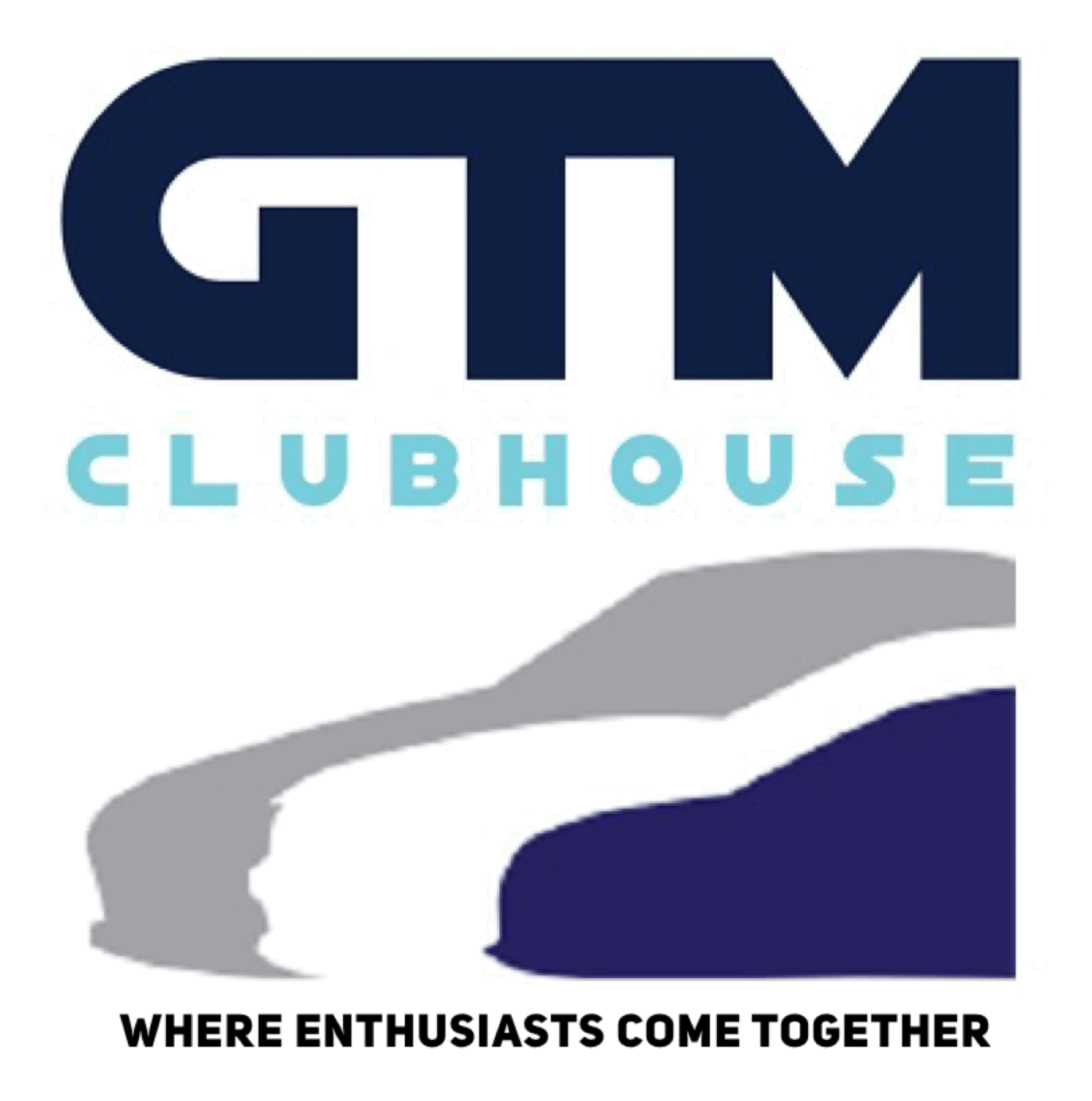

Thank YOU So Much for speaking with me. It was a Great honor to vivir with You and Caitlyn